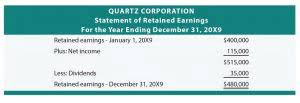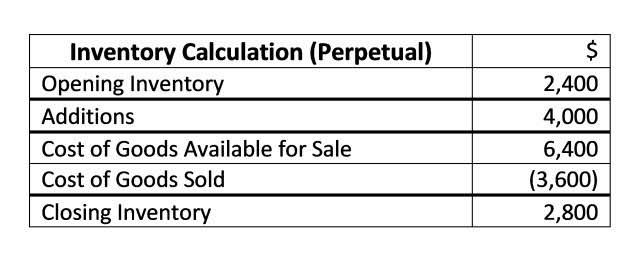
Small business owners must deal with numerous accounting reports to monitor their business’s finances and ensure its financial health. Profit and loss statements, accounts receivable aging reports and cash flow statements are just a few of the essential documents necessary for planning growth and staying on top of money matters. However, some small business owners may overlook the statement of shareholders’ equity ― part of the balance sheet ― while focusing on money coming into and leaving the organization. However, income shouldn’t be your only focus if you want a genuine idea of how your operations are faring.
Company
The Income Statement statement of stockholders equity should be prepared first as the resulting company’s net income, or net loss can be added to the Owner’s Equity Statement, which calculates the ending owner’s capital balance. The ending owner’s capital balance is then used in the Balance Sheet, which is important because the balance sheet can balance at the end of the accounting period. The statement of owner’s equity provides investors with a more detailed understanding of how each individual equity account has been specifically adjusted across different periods. The Statement of Owner’s Equity tracks the changes in the value of all equity accounts attributable to a company’s shareholders and impacts the ending shareholder’s equity carrying value on the balance sheet. A statement of Owner’s Equity is a financial statement containing the change in the shareholder’s capital (reflecting additions and subtractions of equity due to business transactions) over time. When the company gains, it increases the owner’s equity; when the company makes losses, it eats away the owner’s equity.

Owner’s equity on a balance sheet
Such cash outflows, when you withdraw funds for personal use, aren’t classified as business expenses. Instead, they’re directly subtracted from the owner’s equity since you’re essentially reducing your claim in the business. It’s crucial to monitor these outflows to maintain a solid grasp on your financial base. In simple terms, you can calculate owner’s equity for your business by subtracting all your business liabilities from the value of all your business assets. This report holds particular importance for small businesses and partnerships where owner contributions and withdrawals can frequently adjust equity values.

Our Commitment to Inclusion at McDonald’s
The entity has $150,000 of owner’s equity at the beginning of a reporting period, i.e., January 1, 2018. It will reveal whether you didn’t make enough to sustain operations or whether you have enough equity in the business to get through a downturn. The statement of shareholder equity also shows whether you’re likely to get approved for a business loan, whether there’s value in selling the business and whether it makes sense for investors to contribute. Business.com aims to help business owners make informed decisions to support and grow their companies.

Preparing the Statement of Owner’s Equity

Certain types of Gains and Losses are recorded directly in the stockholders equity accounts instead of going through the income statement. The statement of owner’s equity is the second report in the financial statements. A property dividend occurs when the firm pays out dividends in the form of something other than stock or cash, often one of their assets or something they hold in inventory.
- A statement of shareholder equity is a valuable tool for gauging the health of a business for the following reasons.
- For those in investment banking or handling personal investments, having a firm grasp on this concept is imperative, as it provides you with a clear picture of a company’s financial footing.
- Mike needed money for an inappropriate scenario and had to withdraw $3000 from the capital account, despite the fact that the company had never lost money since its existence.
- A few points to note here are that the capital increased overall from the numerical point of view.
This financial introspection doesn’t just benefit you; it also informs potentially life-changing decisions for your business. Your equity statement narrates your past fiscal responsibility, which can sway lenders in your favor—or hint that it’s time to strengthen your QuickBooks financial position before taking the plunge. Similarly, if attracting investors is on the agenda, presenting a solid history of retained earnings could be the clincher. The statement also accounts for any adjustments due to changes in accounting policies or corrections of errors from previous periods.
- It can also give the opening balance of the owner’s equity, explanations for increases and decreases during the accounting period, and the closing balance.
- Remember that the ending balance of the last period is the beginning balance of the current period.
- This statement tells the story of each type of equity over a period of time.
- Preferred stock may be more attractive to investors who are looking for a fixed income stream, but it carries less potential for capital appreciation than common stock.
They had just two events to report in their statement that impacted their equity accounts; they reported net income and they issued dividends (see Figure 5.14). This statement can show the financial health of a business and whether that business has sufficient cash flow to fund its operations without the aid of outside investment. This reports changes in profits, dividends, the inflow of equity, withdrawal of equity, net loss, and so on.
- For example, creditors may reject giving money to a business if it is unable to demonstrate its ability to financially support itself without financial infusions from the owner.
- The resulting value represents the residual claim on assets that remains after all liabilities have been settled.
- A few points to note here are that the capital increased overall from a numerical point of view.
- To calculate owner’s equity, the total assets of a business are summed up, and the total liabilities are deducted from this amount.
- Compute for the balance of the capital account at the end of the period and draw the lines.
Even if you consider merger models, LBO models, or debt vs. equity models, the Statement of Owner’s Equity does not play a direct role. Over one year, the company earns $50 million in Net Income, issues $20 million worth of Stock (with a par value of $2 million), and issues $15 million in Dividends. By contrast, the Statement of Owner’s Equity shows you how a specific section of the Balance Sheet changes over time. At first glance, the Statement of Owner’s Equity might seem like the Income Statement or Cash Flow Statement, as they all track changes over a specific period. For more, see our tutorial on Noncontrolling Bookkeeping for Chiropractors Interests and consolidation accounting.

Why You Can Trust Finance Strategists
- This step demonstrates the direct relationship between a company’s operational performance and its equity position.
- A Statement of Owner’s Equity (or Statement of Changes in Owner’s Equity) shows the movements in the capital account of a sole proprietorship.
- The statement of owner’s equity is the second report in the financial statements.
- The two components of owner’s equity are contributed capital and retained earnings.
- All such information is provided solely for convenience purposes only and all users thereof should be guided accordingly.
However, income and expenses have already been used in the income statement to calculate the profit or loss for the period. In this tutorial we’ll go over the purpose and format of the statement and use an example to see how we would put it together. Deskera Books is online accounting software that will make your processes of financial reporting and auditing easier, faster, and more efficient.
